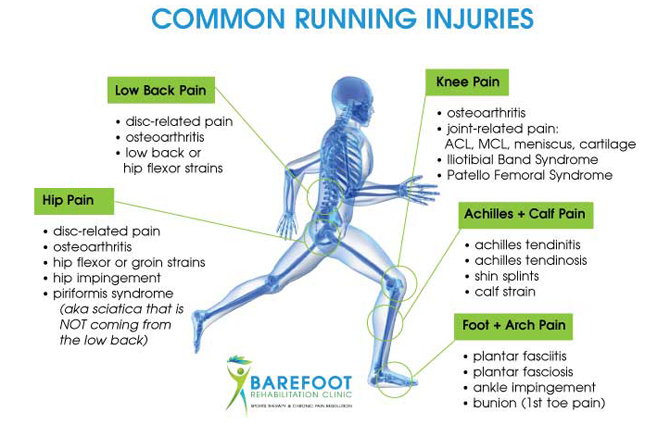Should I Run Before or After Lifting: An In-Depth Analysis
Deciding whether to run before or after lifting can be a challenging task, as both sequences have their own unique advantages and disadvantages. Running before lifting can help increase your heart rate and warm up your muscles, potentially enhancing your weightlifting performance. However, this approach may also lead to decreased lifting efficiency due to energy depletion and increased muscle fatigue. Conversely, lifting before running can allow for optimal weightlifting performance, but the subsequent run might suffer from reduced endurance and speed due to muscle exhaustion.
Understanding the Science Behind Exercise Sequencing
To effectively address the question of whether to run before or after lifting, it’s essential to understand the physiological responses to exercise. When performing cardiovascular activities like running, the body primarily relies on aerobic metabolism to produce energy, which increases heart rate, respiratory rate, and oxygen consumption. In contrast, weightlifting typically involves anaerobic metabolism, focusing on short bursts of intense effort that primarily target the musculoskeletal system.
The order in which you perform these exercises can significantly impact your overall workout efficiency and performance. Running before lifting may lead to increased core temperature and blood flow, potentially enhancing weightlifting performance. However, this approach might also result in diminished energy levels and heightened muscle fatigue, negatively affecting the quality and intensity of your lifting session. Conversely, lifting before running can enable optimal weightlifting performance, but the subsequent run might suffer from reduced endurance and speed due to muscle exhaustion.
Individual Factors to Consider
When determining the optimal sequence for running and lifting, it’s crucial to consider individual factors that can significantly influence your workout experience and results. Personal preferences, fitness goals, and exercise history are all essential aspects to take into account when deciding whether to run before or after lifting.
For instance, if your primary goal is to improve running speed or endurance, it might be more beneficial to run after lifting, as weightlifting can help build lower body strength and power, which can translate to improved running performance. Conversely, if your focus is on enhancing weightlifting performance or muscle growth, running before lifting might be a better option, as it can increase core temperature and blood flow, potentially improving muscle activation and warm-up.
Additionally, individuals with a history of knee or joint issues might find that running before lifting exacerbates pain or discomfort, while those with a history of lower back pain might benefit from running after lifting, as strengthening the core and lower body through weightlifting can help stabilize the spine and alleviate back pain during running.
How to Create a Personalized Exercise Schedule
To optimize your workout routine and ensure a balanced approach to running and lifting, consider the following practical tips and guidelines for creating a tailored exercise schedule:
- Alternate workout days: Dedicate separate days to running and lifting to allow for adequate recovery and prevent overtraining. For example, you could run on Monday, lift on Tuesday, rest on Wednesday, and then repeat the cycle.
- Prioritize: Based on your fitness goals, prioritize either running or lifting at the beginning of your workout when your energy levels are highest. For instance, if your primary goal is to improve running speed, consider running first.
- Time management: Schedule your workouts strategically to maximize efficiency. For example, if you prefer to run in the morning and lift in the evening, consider a compact lifting routine that targets major muscle groups to minimize the time spent lifting before your run.
- Monitor progress: Keep track of your performance, energy levels, and muscle fatigue during and after workouts to identify patterns and adjust your schedule accordingly. For instance, if you notice that running after lifting results in subpar performance, consider switching the order.
- Listen to your body: Be attentive to any pain, discomfort, or signs of overtraining, and adjust your exercise schedule as needed. For example, if you experience joint pain after running before lifting, consider switching the order or incorporating additional recovery days.
Maximizing Performance and Minimizing Injury Risk
To maximize performance and minimize injury risk when combining running and lifting, consider implementing the following strategies:
- Proper warm-up: Begin each workout with a dynamic warm-up, incorporating movements that mimic both running and lifting to prepare your muscles and joints for the upcoming exercises. Examples include high knees, leg swings, lunges, and arm circles.
- Gradual progression: Gradually increase the intensity and duration of your running and lifting sessions, allowing your body to adapt to the new demands and reducing the risk of injury.
- Balanced nutrition: Ensure you consume a balanced diet that provides sufficient energy, protein, and nutrients to support both running and lifting. Adequate pre- and post-workout nutrition can help optimize recovery and performance.
- Adequate rest and recovery: Schedule rest days and prioritize sleep to allow your body to recover and adapt to the physical stress of running and lifting. Adequate recovery can help prevent overtraining and reduce the risk of injury.
- Cross-training: Incorporate cross-training activities, such as swimming, cycling, or yoga, to improve overall fitness and reduce the risk of injury associated with repetitive strain from running and lifting.
- Injury prevention exercises: Perform exercises that target common injury areas, such as the hips, knees, and shoulders, to improve mobility, stability, and strength. Examples include glute bridges, hip circles, and shoulder external rotations.
Sample Exercise Schedules for Different Fitness Goals
The following sample exercise schedules illustrate how running and lifting can be effectively integrated to achieve various fitness goals:
Weight Loss Schedule
Monday: High-intensity interval training (HIIT) running, 30 minutes
Tuesday: Strength training (full body), 45 minutes
Wednesday: Rest day
Thursday: Steady-state run, 45-60 minutes
Friday: Strength training (full body), 45 minutes
Saturday: Long, slow distance (LSD) run, 60-90 minutes
Sunday: Rest day
Muscle Gain Schedule
Monday: Strength training (upper body), 60 minutes
Tuesday: HIIT running, 30 minutes
Wednesday: Rest day
Thursday: Strength training (lower body), 60 minutes
Friday: Steady-state run, 30-45 minutes
Saturday: Strength training (full body), 60 minutes
Sunday: Rest day
Endurance Improvement Schedule
Monday: Steady-state run, 60 minutes
Tuesday: Strength training (full body), 45 minutes
Wednesday: Rest day
Thursday: Tempo run, 45 minutes
Friday: Strength training (full body), 45 minutes
Saturday: Long, slow distance (LSD) run, 90-120 minutes
Sunday: Rest day
Real-Life Experiences and Expert Opinions
To provide a more comprehensive understanding of the “should I run before or after lifting” dilemma, we have gathered insights from fitness experts and enthusiasts who have experimented with different exercise sequences:
Expert Opinion 1: Running Coach
“As a running coach, I’ve found that running after lifting can help my athletes maintain their running speed and endurance, as their muscles are already warmed up from the weightlifting session. However, it’s essential to adjust the intensity and duration of the running session accordingly to avoid overtraining.”
Expert Opinion 2: Personal Trainer
“From my experience as a personal trainer, I’ve noticed that running before lifting can lead to improved muscle activation during weightlifting sessions, particularly in the lower body. However, it’s crucial to ensure that energy levels are sufficient to maintain optimal lifting performance.”
Enthusiast Insight 1: Avid Runner and Weightlifter
“I prefer to run before lifting because it helps me feel more energized during my runs. However, I make sure to prioritize heavier lifting sessions on days when I run after lifting to maximize my strength and power.”
Enthusiast Insight 2: Marathon Runner and Weightlifter
“I usually lift first, as I find that it helps me maintain better form during my long runs. I also feel that lifting before running reduces my risk of injury, as my muscles are properly warmed up and activated.”
Staying Motivated and Adapting Your Routine
Maintaining motivation and adapting your exercise schedule is crucial for long-term success in both running and lifting. Here are some tips to help you stay committed and make adjustments based on your unique circumstances and progress:
- Set realistic goals: Establish specific, measurable, achievable, relevant, and time-bound (SMART) goals for your running and lifting workouts. Regularly reassess your progress and adjust your goals as needed.
- Track your workouts: Keep a workout log or use a fitness app to track your running distances, times, and lifting weights. Monitoring your progress can help you identify trends, set new personal bests, and stay motivated.
- Mix up your routine: Incorporate various running workouts (e.g., intervals, tempo runs, and long slow distance) and lifting exercises (e.g., compound movements, bodyweight exercises, and isolation exercises) to keep your workouts interesting and challenging.
- Listen to your body: Pay attention to signs of fatigue, pain, or overtraining. Adjust your exercise schedule and intensity levels accordingly, and consider taking rest days when needed.
- Seek support: Connect with other runners and lifters for motivation, advice, and encouragement. Joining a running group, attending fitness classes, or hiring a personal trainer can help you stay accountable and engaged in your workout routine.









